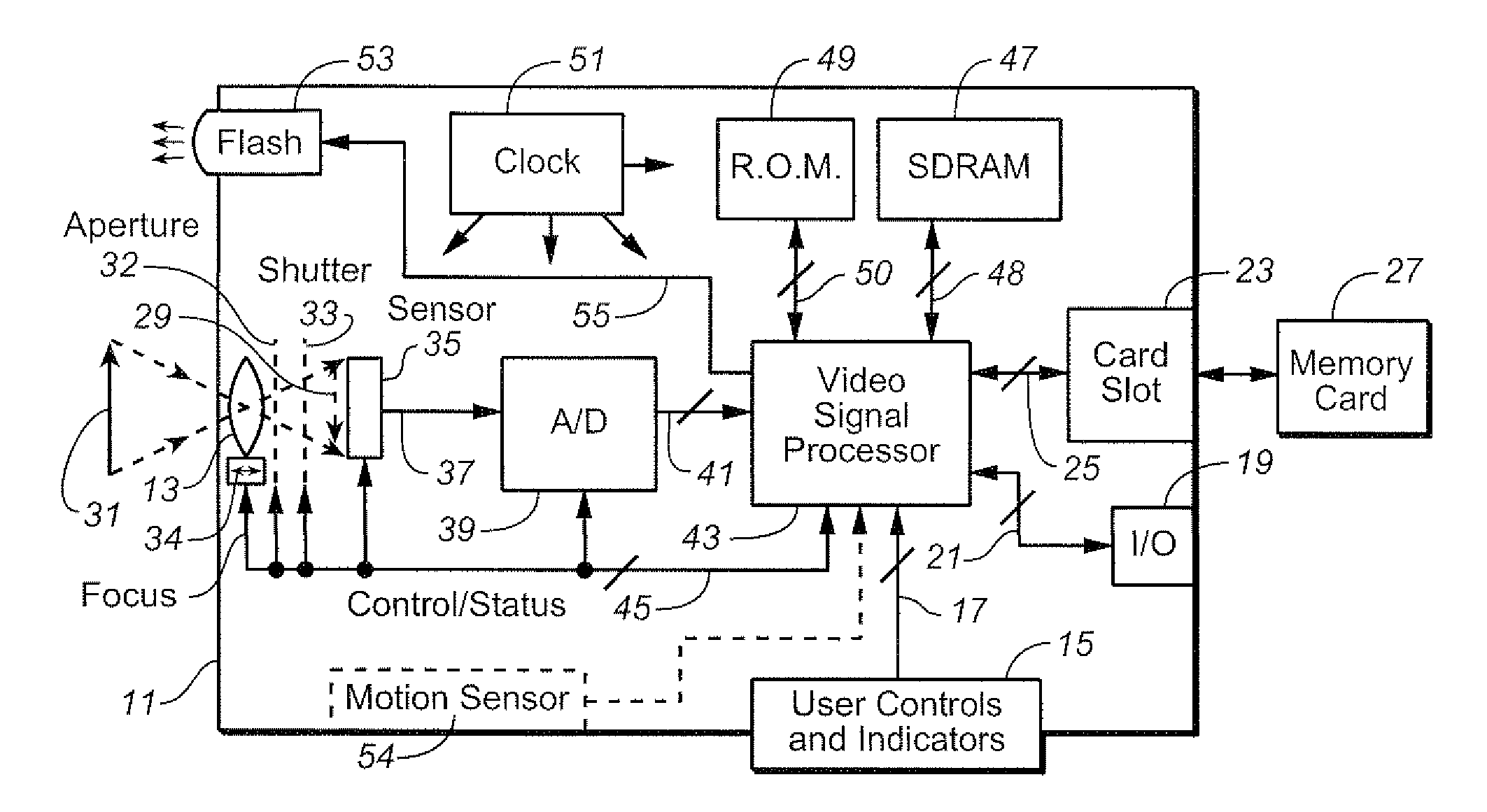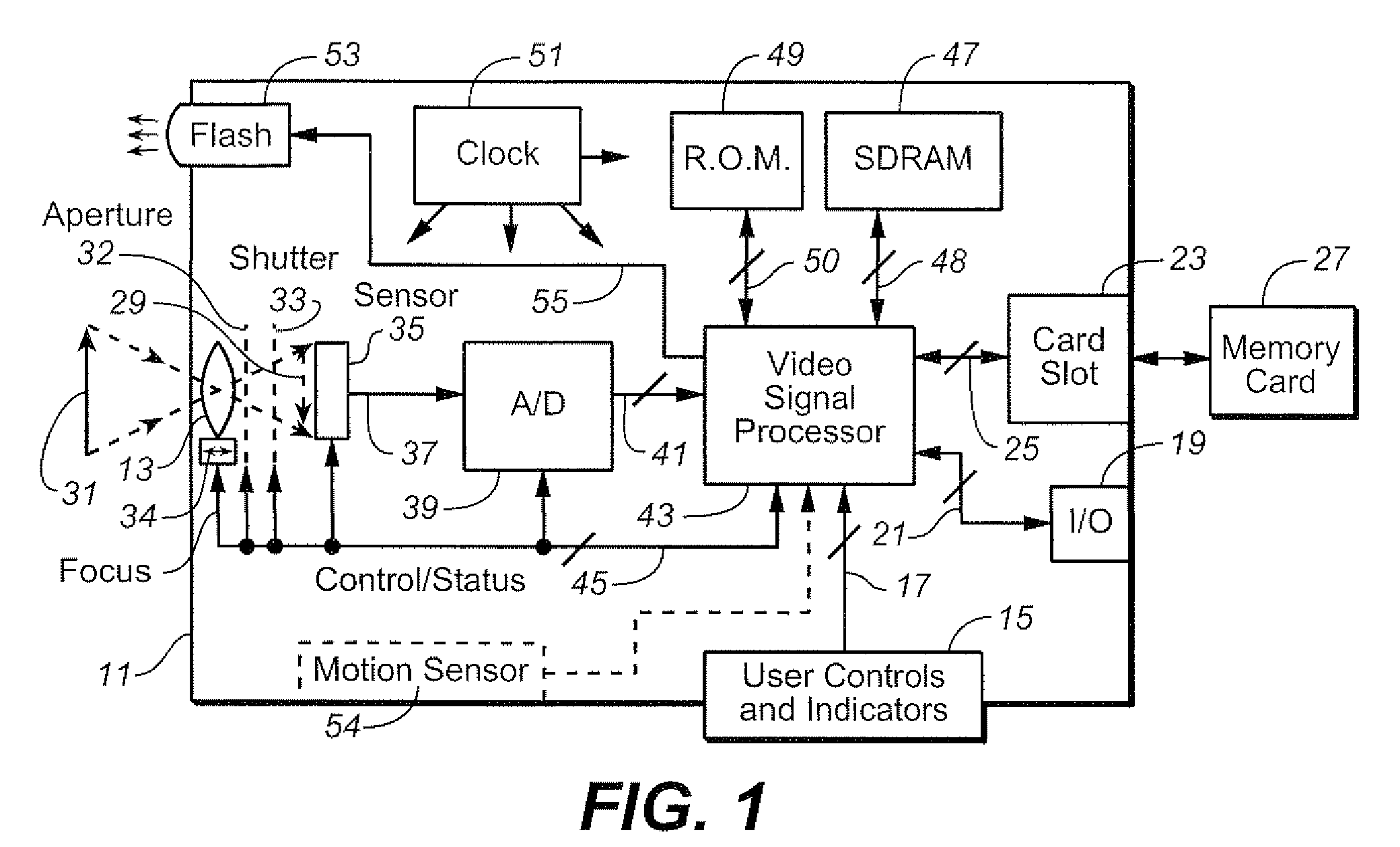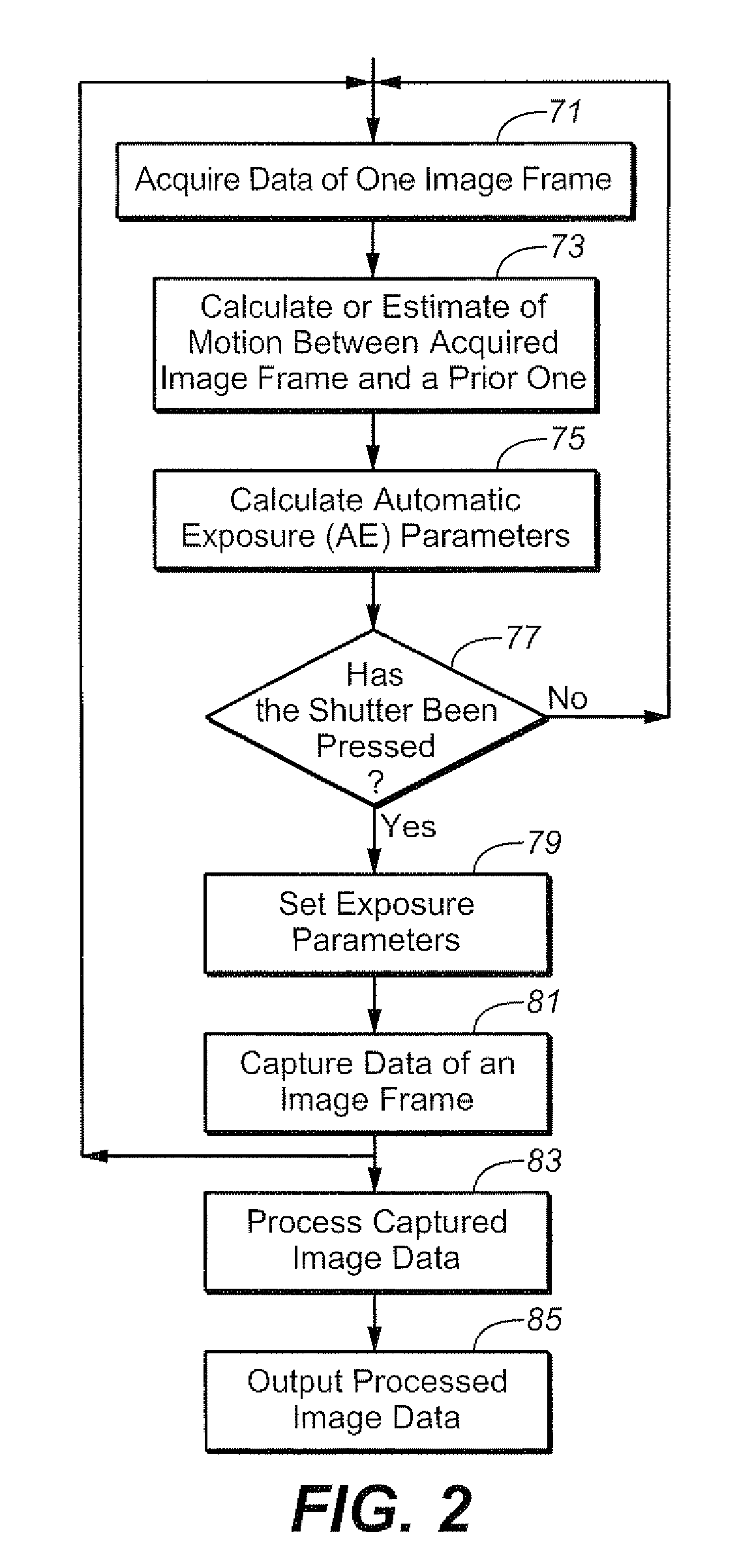Technique of Motion Estimation When Acquiring An Image of A Scene That May Be Illuminated With A Time Varying Luminance
a technology of motion estimation and scene illumination, applied in the field of image motion estimation, can solve the problems of reducing the depth of field and increasing optical blur, reducing the noise within the image, and reducing so as to reduce the effect of varying object scene illumination and reduce the effect of motion estimation, or even eliminate the
- Summary
- Abstract
- Description
- Claims
- Application Information
AI Technical Summary
Benefits of technology
Problems solved by technology
Method used
Image
Examples
Embodiment Construction
Electronic Camera Example
[0022]In FIG. 1, an example of a camera in which the motion estimation techniques described herein may be implemented is schematically shown, which may be a still camera or a video camera. It includes a case 11, an imaging optical system 13, user controls and indicators 15 that generate and receive control signals 17, a video input-output receptacle 19 with internal electrical connections 21, and a card slot 23, with internal electrical connections 25. A non-volatile memory card 27 is removably inserted into the card slot 23. Data of images captured by the camera may be stored on the memory card 27 or in an internal non-volatile memory (not shown). Image data may also be outputted to another video device through the receptacle 19. The memory card 27 can be a commercially available semiconductor flash memory, small removable rotating magnetic disk or other non-volatile memory to which video data can be written by the camera.
[0023]The optical system 13 can be ...
PUM
 Login to View More
Login to View More Abstract
Description
Claims
Application Information
 Login to View More
Login to View More - R&D
- Intellectual Property
- Life Sciences
- Materials
- Tech Scout
- Unparalleled Data Quality
- Higher Quality Content
- 60% Fewer Hallucinations
Browse by: Latest US Patents, China's latest patents, Technical Efficacy Thesaurus, Application Domain, Technology Topic, Popular Technical Reports.
© 2025 PatSnap. All rights reserved.Legal|Privacy policy|Modern Slavery Act Transparency Statement|Sitemap|About US| Contact US: help@patsnap.com



